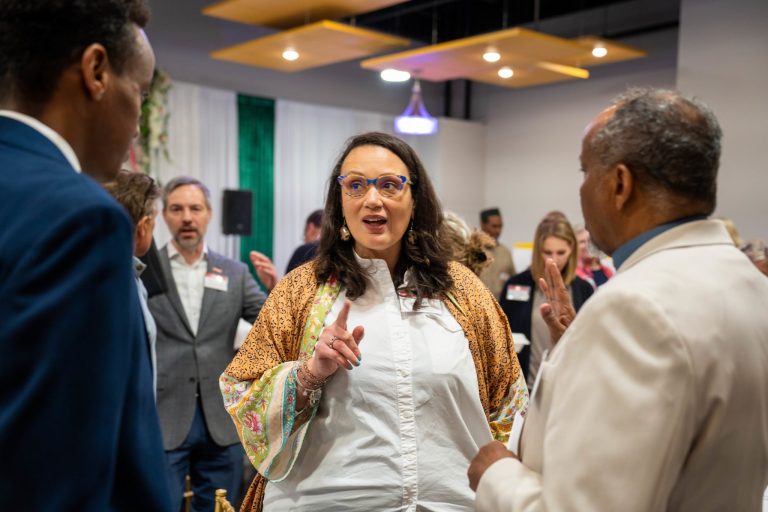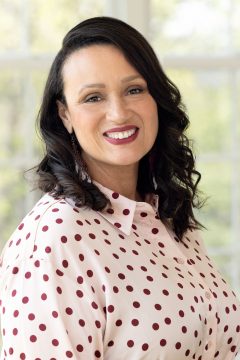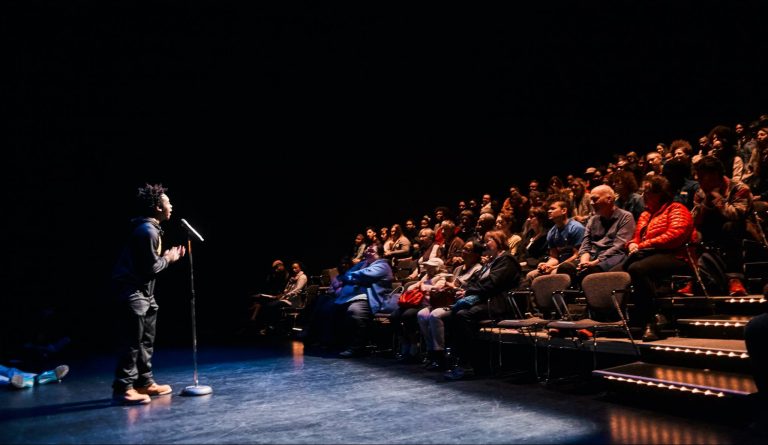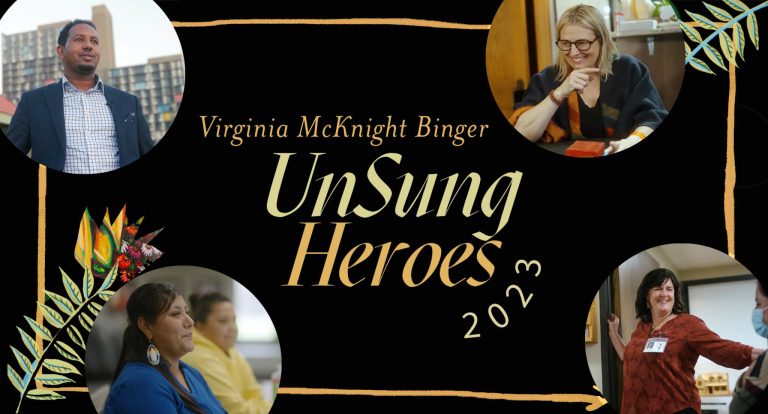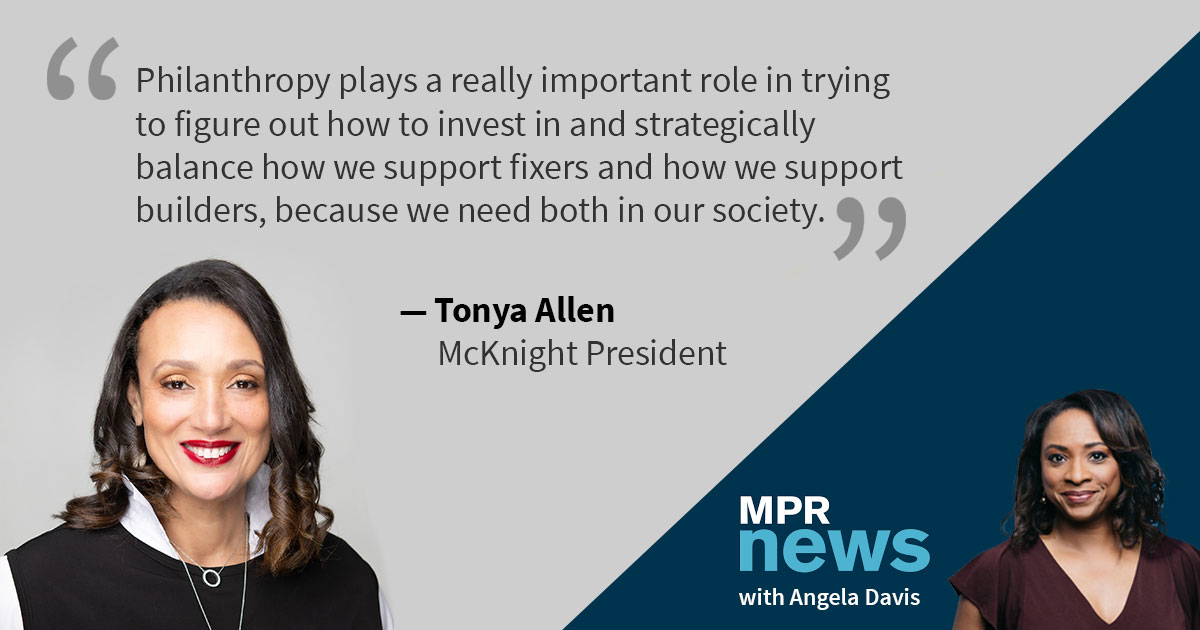
McKnight Foundation president Tonya Allen joined MPR News host Angela Davis to talk about the role of philanthropy in turbulent times. Here are the six big ideas she shared:
1. There’s no better time to be in Minnesota
“I don’t think there is a better time to be in Minnesota… it’s an opportunity to meet the moment.”
In the wake of George Floyd’s murder and the global racial justice uprisings that followed, we have an unprecedented opportunity to not simply rebuild – but to rebuild in a more just and sustainable way, transforming the policies and practices that have perpetuated injustice.
Minnesota is prepared to earn its place as the epicenter of a global movement for racial equity. At McKnight, we plan to honor George Floyd’s legacy by living up to our collective commitments to build a just, equitable, and resilient future.
2. Climate change is more than a technical challenge – it’s also an issue of racial justice.
“Whenever chaos happens in our system, you can believe that those who are most disadvantaged are going to be the ones who suffer the most.”
The climate crisis and racial justice are among our society’s most urgent challenges, and they must be addressed side-by-side. Tonya emphasizes how climate change has thrown our weather systems into chaos – creating unpredictable storms and flooding, food insecurity, record colds and heat waves that hit all of us and often communities of color the hardest.
3. We need fixers and builders
“Philanthropy plays a really important role in trying to figure out how to invest in and strategically balance how we support fixers and how we support builders because we need both in our society.”
Today, we face no shortage of challenges – from the ongoing pandemic and economic crisis to climate change and our nation’s racial reckoning. Tonya discusses how there are two approaches – those who see problems and want to fix what they see immediately, and those who see problems choose to imagine a better future. At times, those who take on these two approaches disagree and may even be in conflict with each other, but they are actually both right. We need fixers and builders. Philanthropy can help us bridge across these different perspectives, helping us move toward better solutions.
4. We need diverse leaders
“We’re looking for diverse leaders in every field who are thinking about how to solve these problems. We’re also looking for people who want to work collaboratively.”
To meet this historic moment, we need diverse leaders from all sectors seeking solutions and collaborating together. Tonya highlights how no one organization or individual will solve today’s challenges alone. It will take all of us – artists, culture bearers, business owners, clean energy innovators, farmers, and community advocates – working together and advancing bold, imaginative solutions.
5. The transformative power of place-based philanthropy
“I do my best work when embedded in community… embeddedness means not just knowing the place, but loving the place.”
Since our founding, McKnight has prided itself on being a place-based foundation. We believe that when Minnesotans come together in shared purpose, we can foster lasting, transformative change that creates a more justice, creative and abundant future where people and the planet thrive.
As a new Minnesotan, Tonya shares how she’s immersed herself in the community and how she’s learning from leaders from across our state – including the six regional Minnesota Initiative Foundations, which focus on strengthening the communities and economies of Greater Minnesota.
6. Accessibility is key to building a more equitable and just society
“We know how to create equity. We know how to create inclusion. The disability community has shown us how to do it.”
Tonya responds to a caller’s comment about the imperative of including people with disabilities in conversations around diversity, equity, and inclusion. She discusses how we have all benefited from the disability community’s push for sloped curb-cuts on sidewalks. Thanks to their successful advocacy, all of us have benefitted – from parents pushing strollers to delivery people, runners, and more. You can read more about the “Curb-Cut Effect” here and how everyone benefits when we design to benefit vulnerable groups.
For nonprofits seeking funding resources, we encourage you to look at our “For Grantseekers” page and familiarize yourself with our varied programs and their specific strategies and grantmaking criteria.
